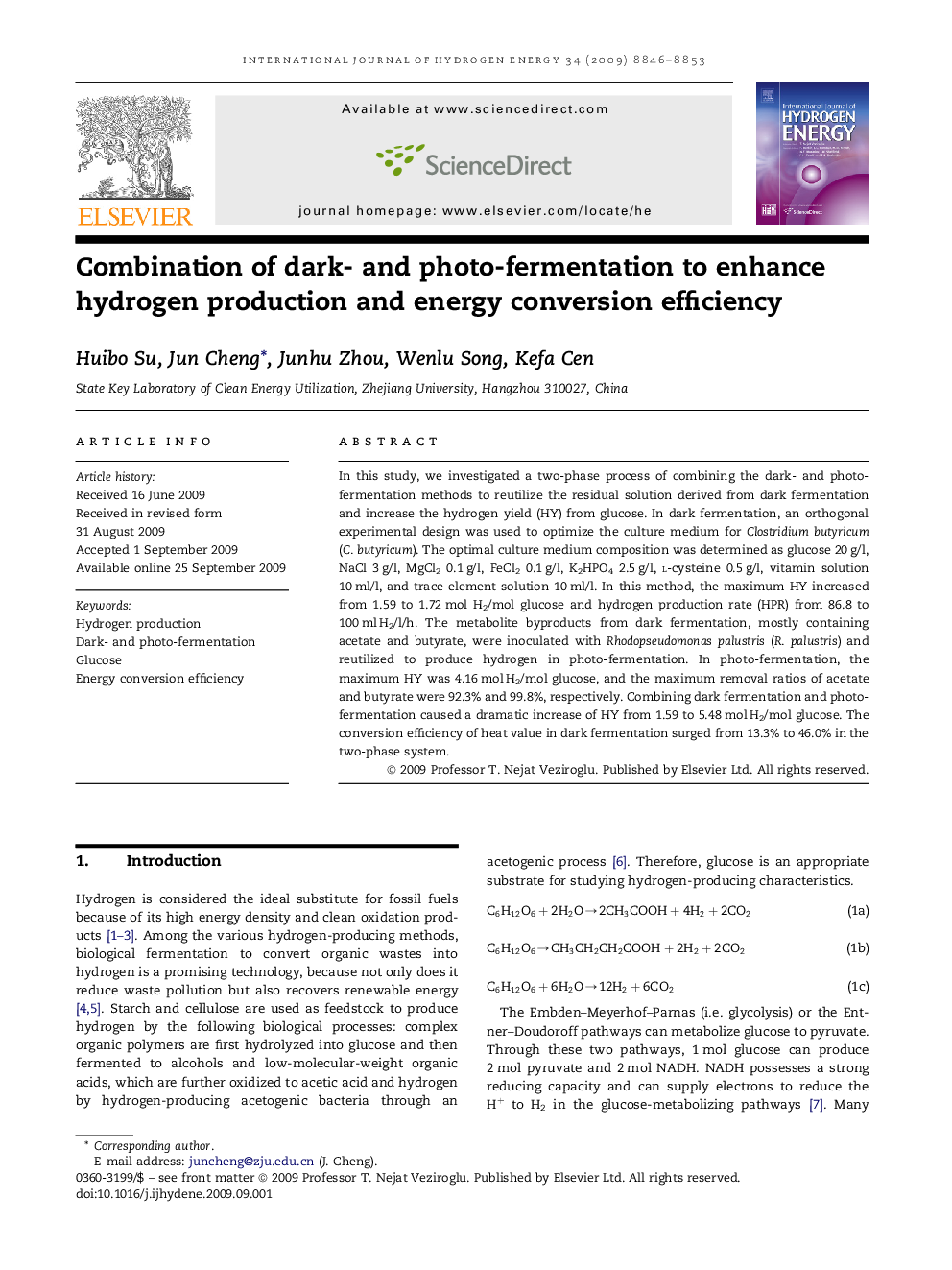| Article ID | Journal | Published Year | Pages | File Type |
|---|---|---|---|---|
| 1283015 | International Journal of Hydrogen Energy | 2009 | 8 Pages |
In this study, we investigated a two-phase process of combining the dark- and photo-fermentation methods to reutilize the residual solution derived from dark fermentation and increase the hydrogen yield (HY) from glucose. In dark fermentation, an orthogonal experimental design was used to optimize the culture medium for Clostridium butyricum (C. butyricum). The optimal culture medium composition was determined as glucose 20 g/l, NaCl 3 g/l, MgCl2 0.1 g/l, FeCl2 0.1 g/l, K2HPO4 2.5 g/l, l-cysteine 0.5 g/l, vitamin solution 10 ml/l, and trace element solution 10 ml/l. In this method, the maximum HY increased from 1.59 to 1.72 mol H2/mol glucose and hydrogen production rate (HPR) from 86.8 to 100 ml H2/l/h. The metabolite byproducts from dark fermentation, mostly containing acetate and butyrate, were inoculated with Rhodopseudomonas palustris (R. palustris) and reutilized to produce hydrogen in photo-fermentation. In photo-fermentation, the maximum HY was 4.16 mol H2/mol glucose, and the maximum removal ratios of acetate and butyrate were 92.3% and 99.8%, respectively. Combining dark fermentation and photo-fermentation caused a dramatic increase of HY from 1.59 to 5.48 mol H2/mol glucose. The conversion efficiency of heat value in dark fermentation surged from 13.3% to 46.0% in the two-phase system.
